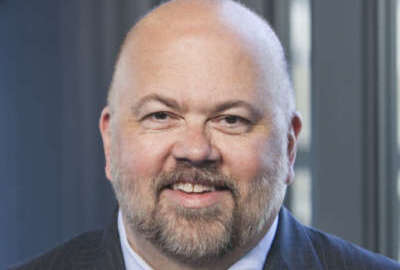
OPM on endangered species list, again
The Trump administration's plan to send most of the work and workers at the Office of Personnel Management to the General Services Administration continues to b...
House Democrats have reacted with horror to the Trump administration’s plan to send most of the work and workers at the Office of Personnel Management to the General Services Administration. Federal unions have also denounced the plan which they see as part of the administration’s drain-the-swamp campaign to undermine long-standing civil service rules. Earlier this week the House Appropriations Committee approved $43.4 million for OPM, which will lose $70 million when its background investigations operation is transferred to the Defense Department at the start of the new fiscal year.
But like lots of things in Washington D.C., it wasn’t always that way. OPM, now viewed as a must-save agency, was once the primary target in a war on waste, red tape and outdated practices.
OPM by tradition and function, doesn’t have many friends in Congress. Unlike many other federal agencies — Interior, Commerce, HUD, Defense, Agriculture, EPA — OPM doesn’t have a big fan base. Outside of federal enclaves, OPM has about the same public name recognition as the Marine Mammal Commission.
Ask a friend or relative who doesn’t work for Uncle Sam what OPM, once known as the Civil Service Commission, does. Then go take a nap.
But OPM is vital — and generally does a good job — serving and protecting, to some extent, the federal workforce. Which is why so many who understand its mission want to see it go away.
Back in the Clinton years, many of the same politicians and people who today are fighting to save the agency were cheering as the White House chopped OPM’s workforce by nearly 50%. Workers were offered $25,000 buyouts, early retirement and eventually those who wouldn’t leave were fired in reduction-in-force actions. The plan also moved investigations outside of OPM and guaranteed an exclusive taxpayer-funded contract to the newly privatized unit. The idea was for OPM to lead the way in fulfilling President Clinton’s promise that “the era of big government is over.” It worked in that about 250,000 federal jobs disappeared.
The largest-ever downsizing was done under the National Performance Review program headed by then Vice President Al Gore. Backers say it eliminated waste and red tape and saved taxpayers billions. Critics said it was a largely political program that demonized government workers. Mid-way during the effort, then OPM Director James B. King wrote a mission statement outlining where the downsizing program was and where, with the approval of Congress, it was headed.
This is it:
Office of Personnel Management — James B. King, Director — Mission Statement:
The Office of Personnel Management (OPM) serves the public by providing human resource management leadership and high-quality services that protect and strengthen the merit system of government in partnership with other federal agencies and their employees, as well as by operating the federal government’s highly regarded health, insurance, and retirement programs.
Summary Budget Information
| FY 1993 (Actual) | FY 1996 (Budgeted) | ||
| Budget | Staff | Budget | Staff |
| $452 million | 6,208 | $377 million | 3,557 |
Reinvention Highlights
From the first, we at OPM took seriously the mandates of the National Performance Review (NPR) and of the Workforce Restructuring Act. The President made clear his goal of a federal workforce that was both reinvented and substantially reduced in size; and we set out to meet this challenge promptly, efficiently, and humanely.
Downsizing OPM to Focus on Core Mission. Our success to date is reflected in the numbers cited above: from fiscal year 1993 through fiscal year 1996 our full-time equivalent workforce decreased by 43 percent while our administrative obligation decreased by 17 percent.
OPM’s downsizing was achieved by a combination of attrition, buyouts, privatization, and — as a last resort — involuntary separations. We have decreased the number of supervisors from one for every 7.8 employees to one for every 12 employees and reduced the number of GS-13s through GS-15s by more than half.
However, our goal was not simply to downsize, but to do so with respect and compassion for every employee involved. That is why we assumed leadership in passing the Workforce Restructuring Act, which began a program of separation incentives — or buyouts — to encourage workers to leave government voluntarily.
We have continued to advise agencies on the program, which has provided 34,694 nondefense buyouts through the end of 1995; these buyouts not only will save an estimated $8 billion over five years, they minimized confusion and poor morale during downsizing. We also carried out a career transition program that has helped more than 90 percent of our separated employees find jobs or make another successful transition.
Privatized Units Able to Operate in the Private Sector. We asked ourselves if OPM was doing work that was not basic to our core mission of protecting the merit system. We determined that the work of our training and investigations units, although important, could be performed as well in the private sector. We set out to determine how best to privatize these units while still serving the interests of the American taxpayers, our employees, and our agency customers.
The more than 200 education specialists in our training unit were much-sought-after by exis-ting private sector training programs and told us they wished to explore that option. We helped them negotiate a contract whereby the highly respected, nongovernmental U.S. Department of Agriculture Graduate School hired about 140 members of our training staff at about the same salary and benefits they had been receiving. Others went to work for the Brookings Institution or other first-rate training programs.
Our investigations unit, which conducted government background investigations, was also made up of highly skilled individuals. We presented them with several options, including that of starting an Employee Stock Ownership Plan, a new employee-owned company that would perform many of the same services but in the private sector. We worked with these employees during the complex negotiations that led to the creation of an ESOP called U.S. Investigations Services (USIS), Inc. By July 1996, 681 of the 706 employees who were offered jobs with the new company had accepted them, and USIS, Inc., began operations, aided by an exclusive contract to conduct investigations for OPM.
The creation of USIS, Inc., was the first government privatization of its kind, and we believe it has every prospect for success. A private consulting firm estimated that the action should save the taxpayers $25 million in five years.
Protecting the Merit System. Because of reinvention, we have refocused on our core mission of protecting the merit system. To that end, OPM has strengthened its Office of Merit Systems Oversight and Effectiveness, which works with agencies to ensure that all employees are treated fairly with regard to hiring, pay, leave, promotions, discipline, benefits, and other workplace issues.
OPM has carried out many human resources management reforms recommended by the NPR. For one important example, we decentralized government job recruitment and hiring, so agencies now have the choice of carrying out their own programs or contracting with OPM or others. We have worked with the Interagency Advisory Group of personnel directors (IAG) to exchange ideas and to spread word of new policies and reforms.
Career Transition Services. Working with IAG, OPM has led the way in implementing the President’s memorandum of September 12, 1995, directing agencies to provide career transition services to dislocated and surplus employees. In December 1995, OPM issued regulations deve-loped in partnership with agencies and unions implementing this directive. Agencies were to establish career transition services and to set up hiring systems giving preference to dislocated employees for those few vacancies that do occur. OPM is also working with IAG in pooling agency resources to provide career transition assistance to employees. In the field, OPM is wor-king with the Department of Labor, the Federal Executive Boards (FEBs), and the Federal Executive Associations (FEAs) to coordinate agencies’ services. Career transition resource materials developed by OPM have been provided to FEBs and FEAs. OPM is also providing direct career transition assistance to a few agencies based on the lessons learned in our own reductions.
Cutting Red Tape and Improving Employee Work Lives. NPR declared war on unnecessary regulations and red tape, and OPM responded with the elimination — a year ahead of schedule — of both the all-but-incomprehensible, 10,000-page Federal Personnel Manual (saving an estimated $30 million) and the complicated Form 171 job application. In most cases, people seeking jobs now can simply submit a resume, or even apply by telephone.
OPM has been a leader in using technology to move government toward the goal of a paperless personnel office. For example, job applications that once took many hours for people to score now are scanned electronically in seconds. Telephones now provide access to current and complete job information. New, automated telephone systems have also improved communications with participants in the federal health and retirement programs.
In response to the President’s call for a family-friendly workplace, OPM has supported such initiatives as child care, telecommuting, flexitime, leave-sharing, and a leave bank. In one case, when an employee was seriously ill, her fellow workers donated six months of leave to her. One employee telecommuted from home while he recovered from an automobile accident, and another telecommutes on afternoons when there is no one else to care for her daughter after school. Managers all across government are learning that where someone works is less important than how they work.
In the past three years, we have begun to glimpse the government of the future. It will be smaller, flatter, more focused, more automated, more family-friendly, more customer-oriented, and more market-driven. We at OPM are proud to have played a leading role in this remarkable renaissance.
Nearly Useless Factoid
By Alazar Moges
If someone asked you to guess what the world’s largest manufacturer of tires is, you probably wouldn’t say LEGO. But you would be wrong if you didn’t. Nearly half of all LEGO sets include wheels, which in total comes out to over 318 million tires annually, over 870,00 per day.
Source: Safelite
Copyright © 2024 Federal News Network. All rights reserved. This website is not intended for users located within the European Economic Area.
Mike Causey is senior correspondent for Federal News Network and writes his daily Federal Report column on federal employees’ pay, benefits and retirement.
Follow @mcauseyWFED





